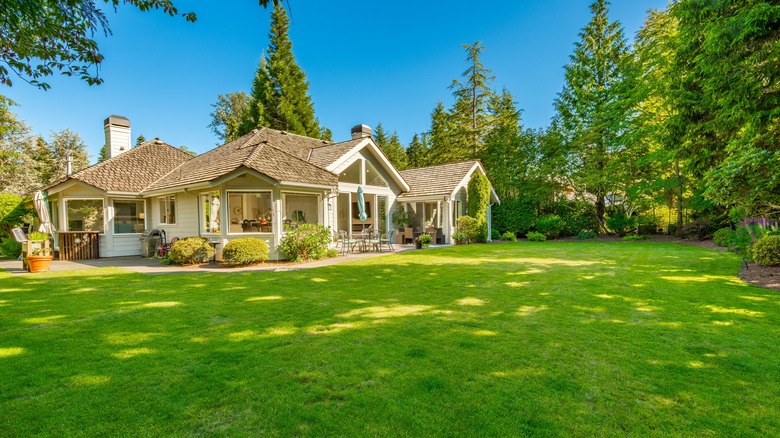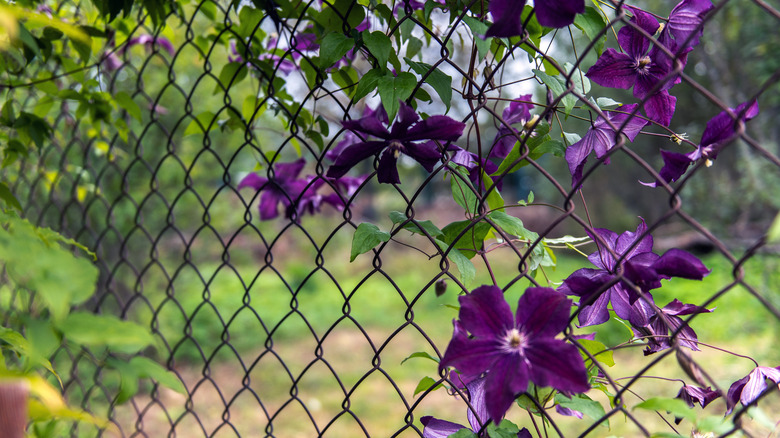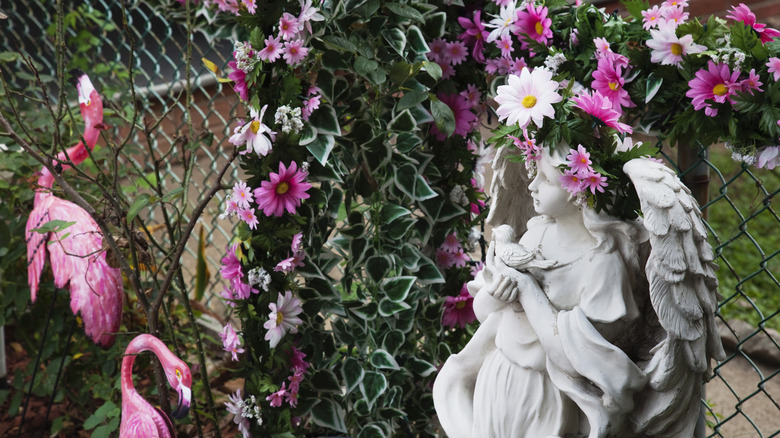What Is A Cyclone Fence And Is It Right For Your Yard?
We may receive a commission on purchases made from links.
If you think a cyclone fence sounds like just the thing you need to keep your property safe from gale-force winds, then unfortunately you're going to be disappointed. While it's true that a cyclone fence is designed to survive a tropical storm, it does so not by trying to stop it but by letting the wind pass right through. At the same time, it can also provide an effective barrier against potential intruders. Many people might know it by its alternative name: a chain-link fence.
Cyclone fences are usually made of interlocked steel strands, although aluminum is an alternative. Aluminum is lighter, won't rust, and some find it more visually appealing, but it is more expensive. Steel cyclone fencing is often galvanized (zinc-plated) to prevent rust. A vinyl coating may also be applied that allows different colors to be used. Although there are many other fence ideas for your yard, few offer the same combination of security and value. This is one reason why cyclone fencing will often be found in commercial locations as well as residential.
There are a lot of pros to a cyclone fence
Cyclone fencing is available in heights of up to 12 feet, although it's important to check zoning restrictions before choosing. For example, it's common for front yards to have a maximum of 3 or 4 feet, but backyards can be much higher. If you're having a fence installed professionally, then cyclone fencing is typically cheaper than wooden alternatives. However, putting up a cyclone fence is not complicated, so it makes a budget-friendly DIY project.
The support posts for cyclone fencing are usually steel, set into concrete. Once installed, it's both strong and very durable. Unlike wood, there's virtually no care or maintenance required. The galvanized coating can wear through eventually, but special touch-up paint like Rust-Oleum's Cold Galvanizing Compound will prevent rust from taking hold. Another good reason for using a cyclone fence in your yard is that it doesn't just help keep people and wildlife out. It's also very good at keeping kids and pets in so they can play safely. Should you need a physical barrier but still want good visibility, the open structure of cyclone fencing makes it easy to see through.
Okay, but what about the cyclone cons?
It's fair to say that cyclone fencing isn't the most attractive option for your yard. It's never going to compete with a white picket fence or wrought iron in terms of curb appeal. That said, if it's used as a boundary between the backyard and open fields or woodland, then choosing vinyl-coated cyclone fencing in green or brown can make it almost invisible.
There are also a number of ways to cover cyclone fencing that allow you to keep the underlying strength but hide the appearance. For example, it makes a great trellis for climbing plants. This can also help overcome the privacy issue — if you can see out, then passersby can see in just as easily. Although it makes a good barrier against some wildlife, it needs to be at least 7.5 feet tall to stop deer, and that may exceed local regulations. Other critters might burrow under, but that's a problem whatever fencing you choose. A cyclone fence (or chain-link fence) is tough, durable, affordable, and secure. It won't get knocked over by high winds either. There's not much more you could want for your yard. Whether it has the necessary aesthetics to suit your property is very much a matter of personal preference.


